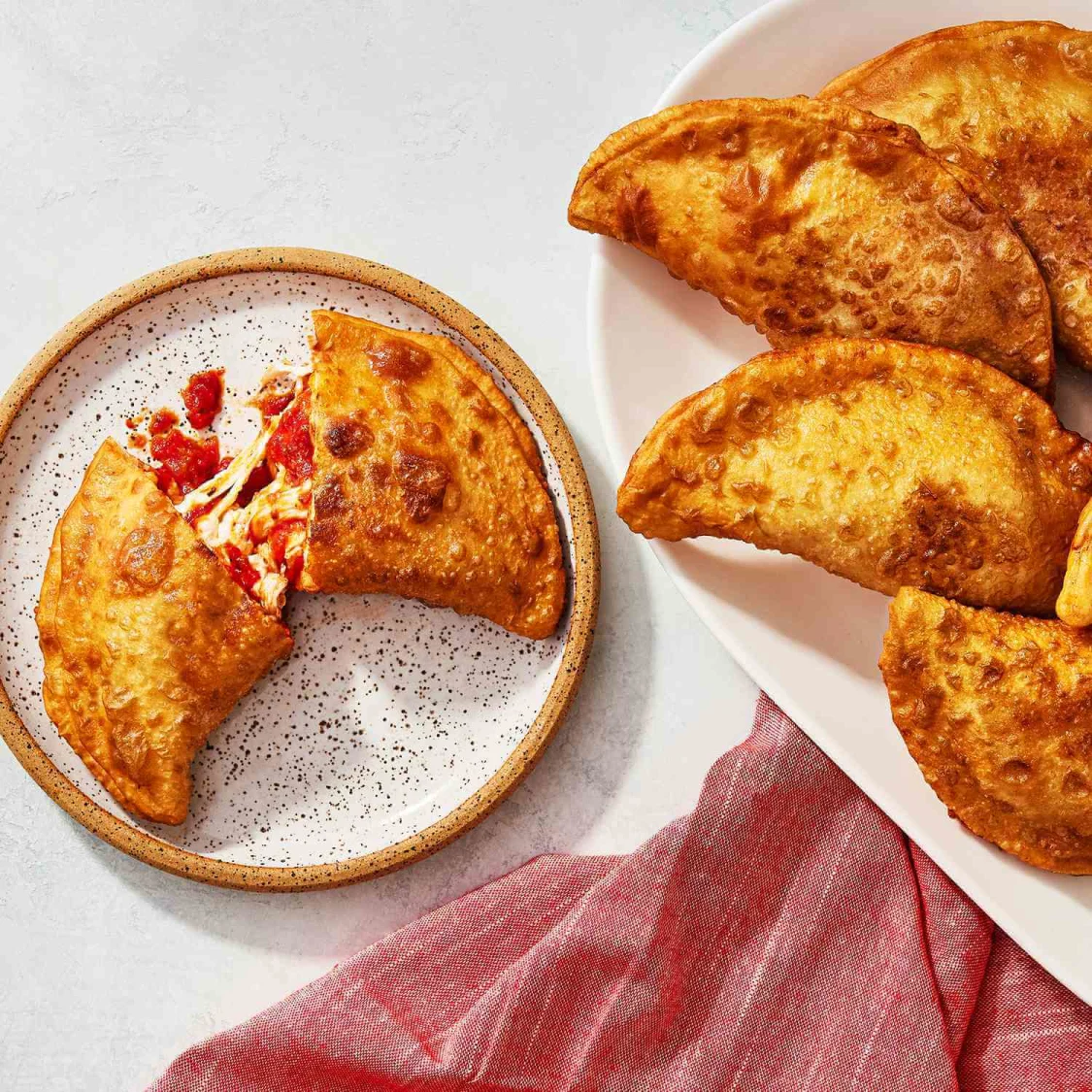
Fried Panzerotto
Fried pizza dough filled with tomato and mozzarella.
Ingredients
- •Pizza dough
- •Mozzarella
- •Tomato sauce
- •Basil
- •Olive oil
Instructions
Prepare Dough
Roll out small circles of pizza dough
Fill
Add cheese and sauce filling
Fry
Deep fry until golden brown
Panzerotto fritto, also known as panzerotti, is a beloved street food originating from Puglia, particularly popular in the city of Bari. Think of it as a smaller, crescent-shaped version of pizza that's fried instead of baked, creating an irresistibly crispy exterior while maintaining a soft, pillowy interior.
This delicacy emerged in the 1940s as a creative way for bakers to use leftover pizza dough. What started as a humble solution to reduce waste quickly became a regional sensation, spreading throughout southern Italy and eventually gaining international recognition.
The magic of panzerotto lies in its preparation. The dough is rolled into small circles, filled with a classic combination of tomato sauce and mozzarella (though variations exist), carefully sealed into a half-moon shape, and then deep-fried until golden brown. The key is achieving the perfect seal to prevent the filling from leaking during frying.
While the traditional filling of tomato and mozzarella remains the most popular, modern variations include ham and cheese, mushrooms and cheese, or even sweet versions filled with Nutella or ricotta and chocolate. Some regions have adapted the recipe to include anchovies, capers, or local specialties.
In Puglia, panzerotti are typically enjoyed as street food, served piping hot in paper bags. They're particularly popular during festivals and as a quick lunch or late-night snack. Locals warn first-timers to be careful when biting into a fresh panzerotto, as the steam and hot filling can be surprisingly intense!
While undeniably delicious, panzerotti are a calorie-dense food due to the deep-frying process. One panzerotto can contain upwards of 350 calories, and the dish is high in saturated fats. Those with gluten sensitivities should note that the dough contains wheat flour. For a lighter version, some modern establishments offer baked variants, though purists insist the fried version is the only authentic way to enjoy this Puglian treasure.
